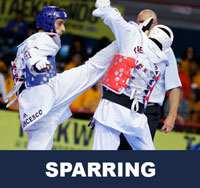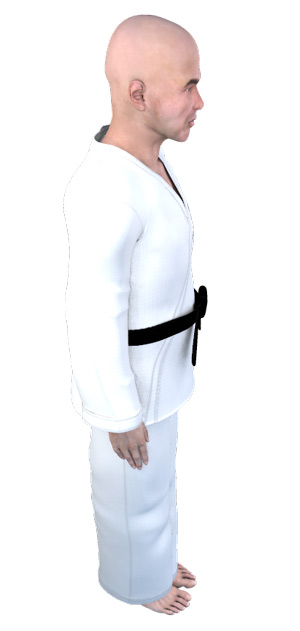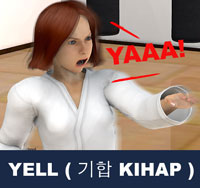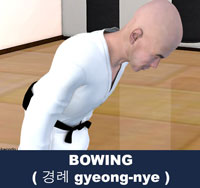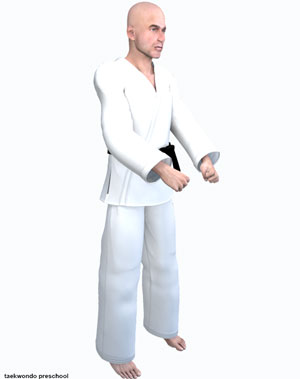Taekwondo 태권도Taekwondo Preschool
Promotion from one geup to the next can proceed rapidly in some schools, since schools often allow geup promotions every two, three, or four months. Students of geup rank learn the most basic techniques first, and then move on to more advanced techniques as they approach first dan. Many of the older and more traditional schools often take longer to allow students to test for higher ranks than newer, more contemporary schools, as they may not have the required testing intervals. View Taekwondo belt levels »

Taekwondo Tenets
Physically, taekwondo develops strength, speed, balance, flexibility, and stamina. An example of the union of mental and physical discipline is the breaking of wooden boards, bricks or tiles, which requires both physical mastery of the technique and the concentration to focus one's power.
There are five tenets defined in the International Taekwondo Federation (ITF) and several more in World Taekwondo (WT).
Courtesy ( 예의 ye-ui )
Showing courtesy to all, respecting others, having manners as well as maintaining the appropriate etiquette at all times, both within and outside the dojang (도장) (designated training area)
Integrity ( 염치 yeom-chi )
Although it may be similar, this form of integrity takes on a more wider role then defined in the common dictionary. In Taekwondo, integrity means not only to determine what is right or wrong but also having the conscience to feel guilt if one has done wrong and to have the integrity stand up for what is right
Perseverance ( 인내 in-nae )
One will persevere time and time again until they have achieved a result which is adequate towards what one was trying to achieve
Self-control ( 극기 geuk-gi )
This means to not only have control over one's physical acts, but also their mental thoughts and actions
Indomitable Spirit ( 백절불굴 baekjul-boolgool )
To have indomitable spirit means to have the courage to stand up for what you believe in, no matter what odds you are up against, and to always give 100% effort in whatever you do

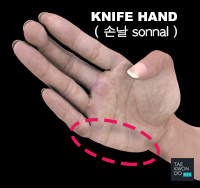
Highlight Knife Hand ( 손날 sonnal ) Posture
By tucking the thumb into the palm, a surface called the knife hand or hand blade ( 손날 sonnal ) is formed. The surface extends with the muscle at the side of the hand located between the base of the small finger and the wrist ( 팔목 palmok ). The hand blade is used as both an offensive and defensive technique which can be executed as a high, low, middle, side, inward, outward, rising or circular. Use of this technique as both a strike and block is featured prominently in many of the World Taekwondo (WT) Taegeuk Poomse.
* Please see a certified Master Instructor ( 사범님 sabeomnim ) for training. Proper guidance and instructions are needed to ensure safe training.
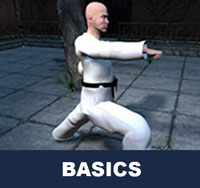
Taekwondo Basics
Here is where you can learn more about Taekwondo 태권도. Knowing the fundamental basics is very important for your learning path as you build your skills and knowledge. There are certain rules that need to be followed to show respect to the master ( 사범님 sabeomnim ), the instructors ( 교사님 gyosannim ), other practitioners and to the martial arts. They vary between schools but many have similar rules and guidelines. For more information View Taekwondo Basics »
When you reach senior belt you are expected to guide the junior belts when they are beginning Taekwondo such as showing by example. To advance from one rank to the next, students typically complete promotion tests in which they demonstrate their proficiency in the various aspects of the art before a panel of judges or their teacher. View Taekwondo belt levels »
RESOURCES
This article uses material from the Wikipedia article "International Taekwondo Federation Philosophy", which is released under the Creative Commons Attribution-Share-Alike License 3.0.



